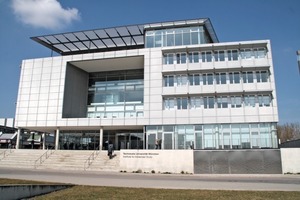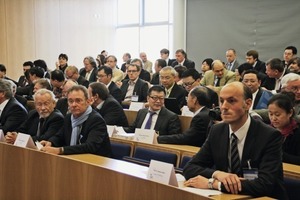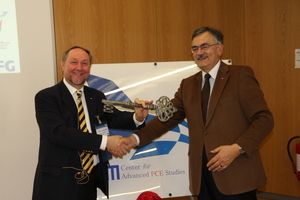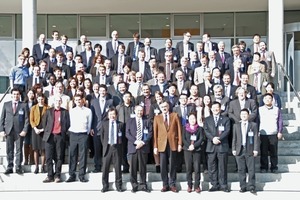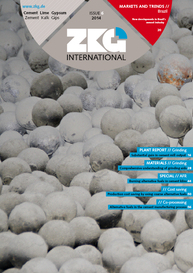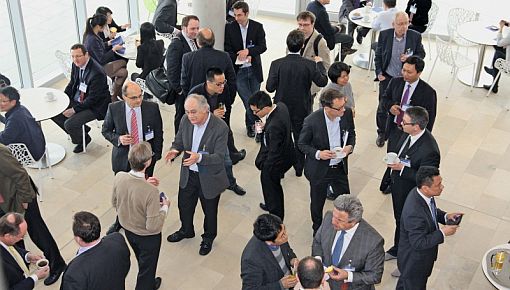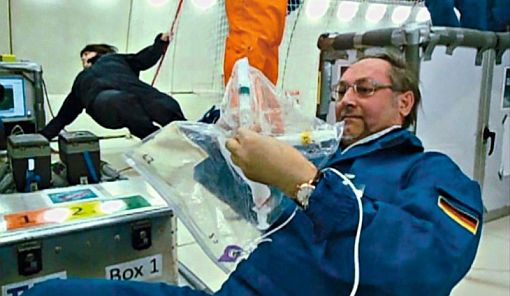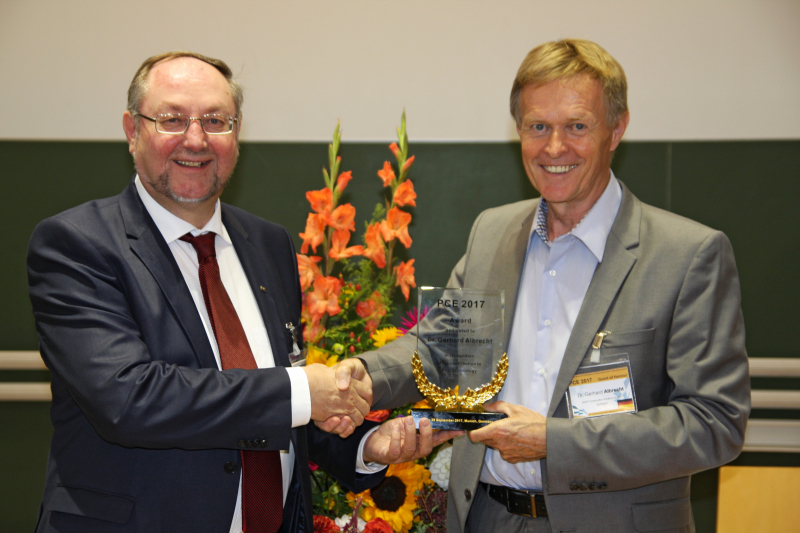”TUM Center for Advanced PCE Studies“ opened
On 28.03.2014, the Technische Universität München opened its new “Center for Advanced PCE Studies” at the Faculty of Chemistry in Garching near Munich/Germany. PCEs (polycarboxylatethers) are comb polymers which are admixed to concrete to achieve high performance products such as self-compacting or ultra-high strength concretes. To this event, the leading global experts on PCE technology were invited and numerous guests from foreign countries including Japan, China and Russia joined in on this special day.
Prof. Dr. Wolfgang A. Herrmann, President of TU Munich, explained the reasons for opening a new center on PCE research. In his view, construction chemistry is an important pillar of the German economy. After all, 10% of global production in this area goes to the construction sector, in addition to the automotive industry. “The TUM is particularly suited for such a center, because it is the only university in Europe and North America with its own Chair for Construction Chemistry”, Herrmann said.
The Vice Dean of the Department of Chemistry, Prof. Dr. Stephan Sieber, elaborated on the significance of the new center for the whole department.
Prof. Dr. Johann Plank explained that the new facility will give young researchers the opportunity to work in the innovative field of PCE superplasticizers and will enable them to advance this important technology. In this context, Prof. Plank introduced the first student at the center, Li Huiqun. She will work on the clarification of the molecular structure of PCE polymers using 13C NMR spectroscopy.
Additionally Prof. Plank said that the center represents a platform for knowledge exchange between academic fundamental research and industrial applicators. Thus, companies have the opportunity to conduct research projects e.g. by forming consortiums. The facility also provides the opportunity to educate specialists from the industry in PCE technology including synthesis, quality control and application.
For an even better understanding of superplasticizers, Plank proposed new institutions to be founded: A Global Forum for coordinating and planning industrial and academic research, a PCE Research Consortium with members from industry and academia, plus an Advisory Board to propose fields of research and advise the individual research activities and directions of the new TUM Center.
Next, the inventor of PCE superplasticizers, Dr. Tsuyoshi Hirata from Nippon Shokubai in Japan was awarded the TUM Badge of Honor for his pioneer achievement. Also, several companies which donated a significant amount of money to the start of the new centre were honored with the TUM badge and a commemorative insignia.
After the opening ceremony a symposium on the current status of PCE technology took place. Dr. Hirata started with his presentation “The Invention of PCE” in which he showed the strenuous way from the first theoretical concept of PCE to their market success. In October 2013, Hirata-san received the Hans-Kühl-Medal of the GDCh for his discovery of PCE at the 1st International Conference on Construction Chemistry in Berlin.
Dr. Norman Blank reported on “20 Years of Experience with PCE at Sika” and portrayed his experience with PCE at several construction projects in China and Europe, including the Shanghai World Financial Center and the new Gotthard Base Tunnel in Switzerland. In his opinion such ambitious construction projects could not have been realized without the application of modern PCE superplasticizers. In the future, he sees bio-based PCE made of molasses or corn becoming more important.
Dipl.-Min. Eugen Kleen from MC Bauchemie Müller GmbH in Bottrop reported on “PCE from the viewpoint of global application”. He exemplified the enormous problems with PCE application in less developed countries in Africa or Asia. There, amongst other things, the inhomogeneity and the poor quality of the aggregates available and the resulting unpredictable PCE performance present a main challenge for applicators.
A highlight of the symposium was the contribution of Dr. Gerhard Crass (Clariant GmbH, Switzerland), entitled “Polyglycols as Macromonomers for PCEs from an Industrial Viewpoint”. As representative of the world´s biggest macromonomer producer he described the industrial synthesis of different macromolecules (MPEG methacrylate esters, allyl, vinyl and isoprenyl ethers) and their quality standards (e.g. the diol content). Additionally, he gave an outlook on the future development of the PCE market from Clariant’s point of view.
The following presentation “The current situation and development of ether-based PCE macromonomers in China” by Prof. Zhu Jianmin from Liaoning Oxiranchem which is the largest producer of macromonomers in China, covered a similar topic. He summarized the current status of the PCE market in China (production volume 2013 ~ 1.8 Mio. tons 20 wt. % solution) and the expected growth which is mainly driven by the construction of high-speed railway lines, of subways in the mega cities and of infrastructural projects, predominantly now in western China.
Similar experiences were reported by Prof. Kong Xingming from the Tsinghua University in Beijing in his presentation “History and future of PCE in China”. There, the audience learned that PCE superplasticizers were introduced to the Chinese construction industry in a PCE symposium only 10 years ago. Nowadays, China represents the largest PCE market with roughly 500 producers.
In the last presentation “PCEs – What will come next?”, Prof. Plank looked into the future of PCE technology. According to him, currently the biggest challenges for PCE technology are the incompatibility of PCE with specific cements and their sensitivity to clay contaminants. The latter problem can be found mainly in developing countries. Improvements can be made only via a deeper understanding of the molecular structure of PCE polymers as well as by the development of new monomers or new synthesis methods. Because of their excellent cost-performance relationship, Prof. Plank considers it unlikely for the near future that polycarboxylatethers will be replaced by a new type of superplasticizer.
The commemorative event closed with a gala dinner on the top floor of the building where participants had the opportunity for discussion with new and old acquaintances of the PCE community.

